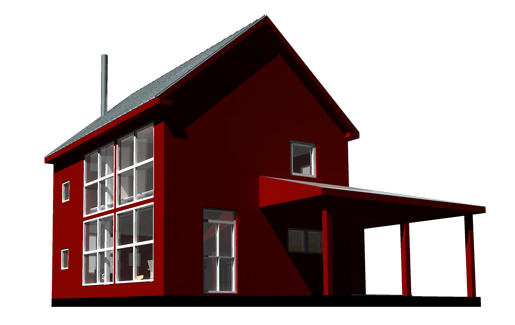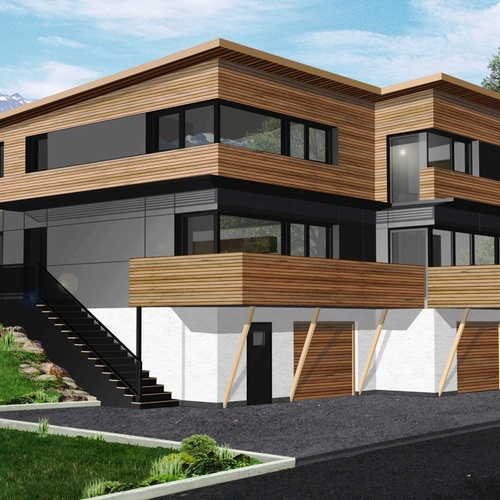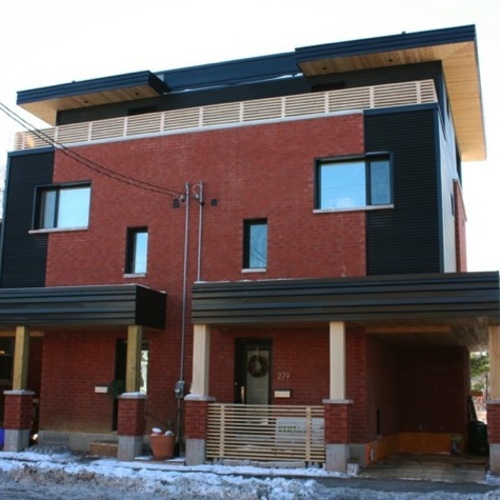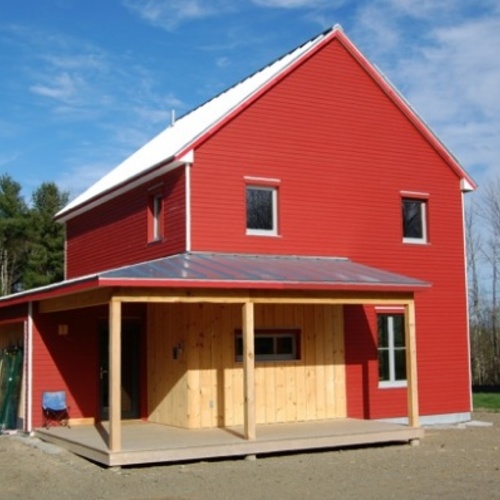Image Credit: G•O Logic
Image Credit: G•O Logic The prototype home is constructed with a shallow foundation isolated from the earth by rigid insulation. Precut 6-in.-thick SIPs were used on the exterior walls. The Belfast Cohousing & Ecovillage, which will include 30 G•O Logic homes.
As delighted as they might be about the performance of a house that meets Passivhaus standards, prospective homebuyers interested in such a home have been conditioned to expect a bit of sticker shock. One of most heavily publicized Passivhaus projects in North America, after all, was Austria House, a 3,000-sq.-ft. multiuse building in Whistler, British Columbia, that, at just over $400 per square foot, is designed as a showcase for energy efficient construction materials from Austria.
And while most people recognize that Austria House, which served as the Austrian Olympic Committee’s communications center during the Winter Olympics, is an extreme example, it’s still reassuring to learn that residential builders are tackling the rigors of the Passivhaus standard for far less money. A case in point is the 1,500-sq.-ft. prototype home being constructed in Belfast, Maine, by local builder G•O Logic. Construction costs for this home, which is scheduled for completion this spring and is aiming for LEED for Homes Platinum certification as well as certification by Passive House Institute U.S., are expected to be about $150 per square foot.
A software solution
As noted in a recent blog post by Residential Architect magazine, the prototype’s design innovations include a shallow foundation isolated from the earth by rigid insulation and the use of Passivhaus Planning Package software to model various building shell configurations and mechanical systems, which eliminated the need for a mechanical engineer. The 6-in.-thick SIPs used on the exterior walls, the magazine points out, arrived at the site precut and ready to lift into place.
The builder says that the house, once completed, will be rented to a local family, open for tours on a limited basis, and monitored over a two-year period to verify its energy use targets, which include an annual energy consumption target of 120 kWh per square meter. The house is also being offered in 1,200-sq.-ft. and 1,700-sq.-ft. versions.
G•O Logic, in fact, is no stranger to projects designed to merge energy efficiency and affordability. The builder has also designed 30 energy efficient homes for the Belfast Cohousing & Ecovillage, whose residents will own their homes but share community land and buildings. The homes will range in size from 440 to 1300 sq. ft., with prices ranging from about $140,000 to $270,000.
Weekly Newsletter
Get building science and energy efficiency advice, plus special offers, in your inbox.
















2 Comments
Do you mean "120 kW per
Do you mean "120 kW per square meter" or "120 kW hours per square meter?"
Response to Jack Woolfe
Jack,
Indeed, the intended unit was kWh, not kW. Thanks for catching the typo.
Log in or create an account to post a comment.
Sign up Log in